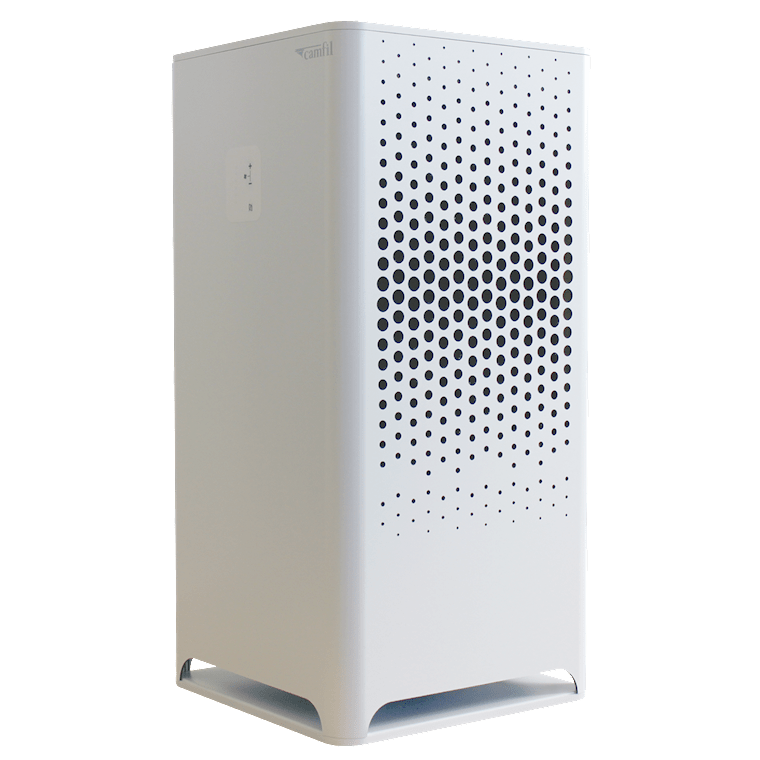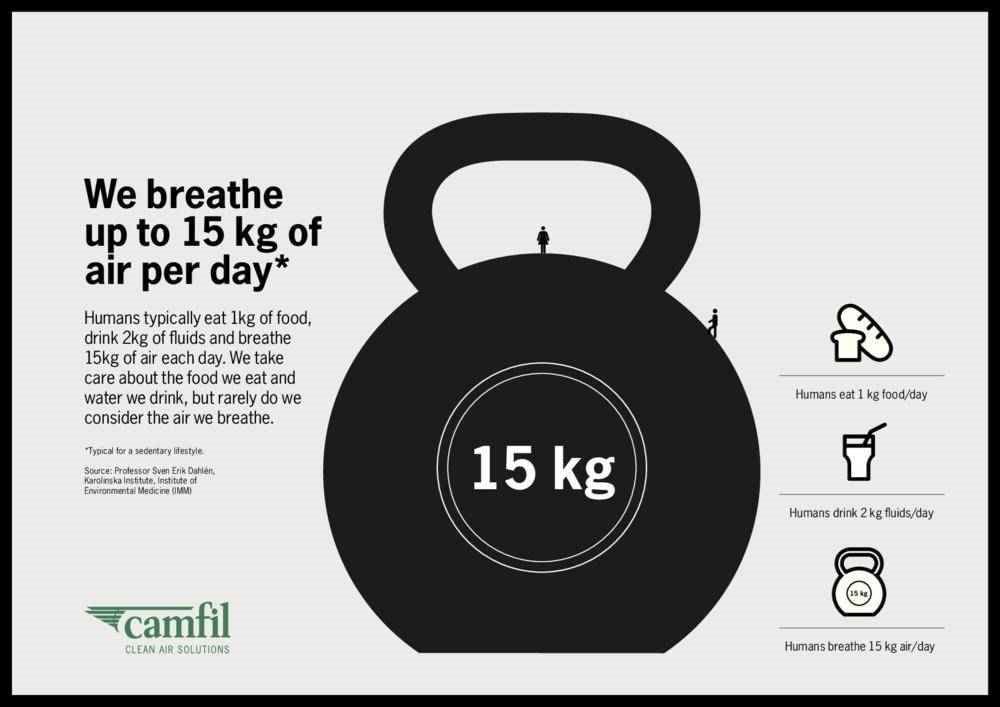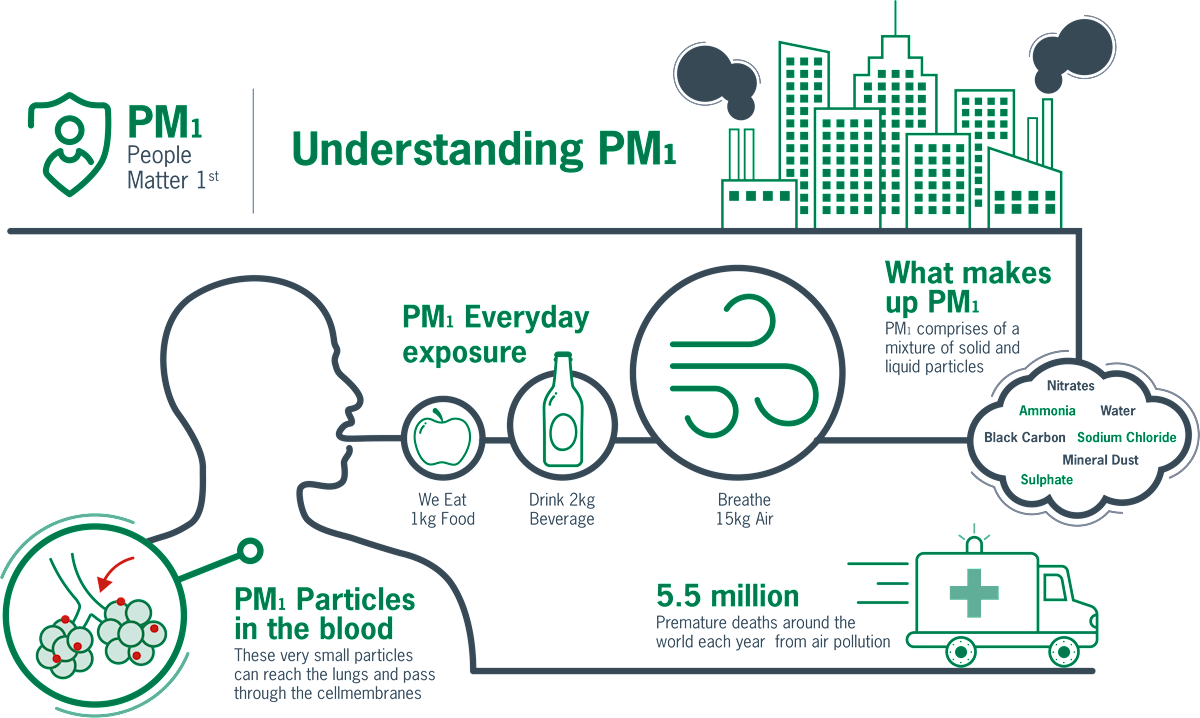We spend up to 90% of our time indoors, and the air we breathe affects both our health and how we perform. Indoor air can be up to 50 times more polluted than outdoor air because of the combination of the air pollution outdoors and the indoor pollutants we and our surroundings create. That’s why efficient ventilation and air purification are critical.
With its campaign “How does your building breathe?” the Swedish trade association Svensk Ventilation is putting the spotlight on the importance of air quality and ventilation, and what can be done to improve them. Learn about their campaign (in Swedish).
Indoors, we are exposed to a host of particles and contaminants that directly impact our health. If the supply air is not filtered efficiently, you risk adding significant numbers of harmful particles to the indoor air. These particles enter our respiratory system and can continue into our cardiovascular system.
Ventilation controls airflow in a building and should ensure that bad air is removed. There are basically three different ventilation systems: natural ventilation, mechanical exhaust fans, and FTX.
Most people know that air pollution causes cardiovascular diseases and increases the risk of cancer. But did you know that studies have also found links between air pollution and effects on the brain, such as dementia, ADHD and depression? In Sweden, we have both comparatively clean outdoor air and good ventilation. Although we are fortunate that most workplaces have a well-functioning ventilation system, our indoor environment is in fact often up to 50 times more polluted than the outdoor air. Poor ventilation can also reduce work performance by up to 15%. With healthy workers and clean air, we improve performance and reduce the number of sick leaves.
What if we could hoover the air to improve the indoor climate? Well, we can use an air purifier as our hoover. Installing an air purifier in a room reduces the risk of occupants’ inhaling dangerous pollutants and getting sick. A good air purifier can create a much cleaner indoor environment in minutes by filtering out 99.995% of the particles. This significantly reduces the risk of exposure to infection and pollution. Air Purifiers are by far the easiest and fastest way to improve indoor air quality and create a healthy, productive indoor environment. Investing in clean air means taking health to the next level and creating a more attractive workplace.

By choosing the right filter, you can obtain considerable energy savings while achieving high indoor air quality.
Changing filters frequently is also important for saving energy. This is because dirty filters make the entire system less energy-efficient since the incoming air faces more resistance as it passes through the filter. What this means is that the fans have to work harder to get the air moving – which wastes energy.
If you change out your filters as recommended, you’ll save plenty of energy and money. Reduced energy demand also means a lower environmental impact.
PM1 particulate matter is the most important and relevant particle fraction to filter in order to create a healthy indoor air quality (IAQ) that best protects people and processes. This particle size is the most dangerous to us humans because the human body cannot sufficiently protect against it. Such particles penetrate our body through the respiratory system as we inhale them, and they end up deep in our lungs and continue on into our bloodstream. Studies conducted by Lars Ekberg from Chalmers Industriteknik show that an air filter of at least PM1 60% is required to filter hazardous particles from the outdoor air. Learn more in Camfil’s reports PM1 – Fine dust a hazard to health and PM1 – The importance of good indoor air.


Eurovent provides good guidance and recommendations regarding filter class for supply and exhausts air depending on the operation and outdoor environment in accordance with EN ISO 16890. The higher the requirements for the supply air, the higher the requirements for the filter class.
The choice of the air filter and filter class is crucial for the quality of the supply of air. To protect the ventilation system, a minimum filter class of ePM10 50% (formerly M5) is recommended. But to protect people against contaminants, higher filter classes for the supply air are needed – a minimum of ePM1 50% (formerly F7) to remove at least half of the small particles. The wrong filter class can cause millions of harmful particles to pass through the filter and reach your lungs. Sometimes air filters with carbon are also needed to capture gases in places like high-traffic environments.

The life cycle cost indicates the user’s cost of filtering air throughout the entire use phase. A cheap filter can cost you – and your health – in the long run.
It’s also essential to conduct maintenance on air filters and replace them when needed. Dirty heat exchangers lead to higher costs due to reduced efficiency. And dirty filters increase air resistance, which can prevent a fan from providing the right amount of air and thus drive up electricity consumption. An investment in good ventilation is an investment in human health and productivity. Humidity in the outdoor air associated with organic matter, such as pollen, allows bacteria and other unwanted substances to thrive in the filter. All the air you breathe indoors goes through the air filter. So what do your filters look like, and do you replace them on time?